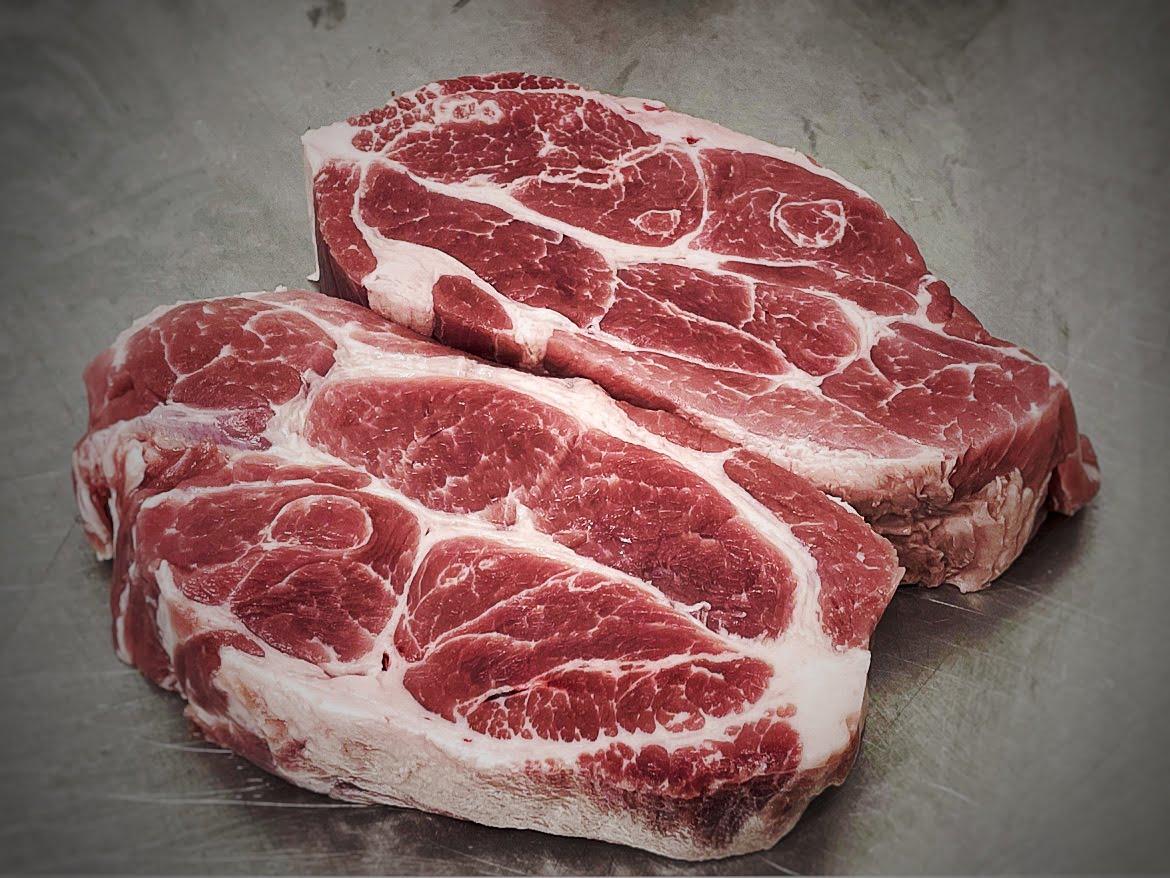For pork aficionados, trying new and unique cuts of meat is an exciting adventure. One such cut that generates curiosity is pork collar. But what exactly is pork collar? Where does it come from on the pig? And how do you cook this tasty cut?
In this article, we’ll explore everything you need to know about flavorful pork collar. Read on to get clear answers to your pork collar questions!
What is Pork Collar?
Pork collar refers to a triangular cut of meat from the shoulder of the pig. It sits above the front legs and includes portions of the neck, shoulder blade, and upper arm muscles.
This cut is sometimes referred to as a “center cut boneless pork butt.” But don’t let the name confuse you – pork collar does not actually come from the rear end of the pig.
Other common names for this cut include:
- Pork neck
- Pork shoulder
- Boston butt
Where Does Pork Collar Come From on the Pig?
Pork collar is located in the shoulder region of the pig, specifically the upper portion above the front legs This includes sections of the neck, shoulder blade, and upper arm
It sits between the lower shoulder/picnic shoulder below and the loin above. It does not come from the back, hindquarters or rear of the animal.
This area of the pig gets plenty of exercise, so the meat has great marbling from fat as well as connective tissue. This gives pork collar its signature succulence and flavor when cooked
Characteristics and Flavor Profile
Well-used muscles and abundant marbling make pork collar one of the most flavorful cuts Here’s an overview of its taste and texture
- Rich, meaty pork flavor from fat marbling
- Tender and juicy when cooked properly
- Satisfying chew from collagen that melts into tenderness
- Ability to absorb smoke, spices, marinades well
- Versatile for roasts, braises, stews, and more
- Economical cut with great flavor
Overall, pork collar offers the satisfying meaty experience pork fans crave!
Best Cooking Methods for Pork Collar
The marbling and collagen in pork collar make it perfect for moist cooking methods that tenderize the meat. Top cooking suggestions include:
-
Braising/Stewing: Cut into chunks and braise or stew until fall-apart tender.
-
Pulled Pork: Roast or smoke a whole collar low and slow until shredable.
-
Roasting: Roast in the oven uncovered to get a delicious crust.
-
Grilling/Smoking: Works great sliced into steaks or chops for quick grilling or low-slow smoking.
-
Sous Vide: Cook sealed in a water bath for up to 36 hours for insanely tender meat.
For maximum tenderness, cook pork collar to an internal temp of at least 195°F to melt the collagen into luscious gelatin.
World Cuisine Uses for Pork Collar
Pork collar brings deep pork flavor to dishes around the world:
-
American BBQ – Smoked or pulled pork
-
Italian – Braise into a rich ragu sauce
-
Latin America – Pernil (roast pork shoulder)
-
Chinese – Lu rou pork stew, red cooked pork
-
Spanish – Pinchos morunos (Moorish skewers)
-
German – Schweinebraten (roast pork with cracklings)
From street food to upscale entrees, pork collar excels at adding succulent texture and taste. It suits a wide range of global seasonings and preparations.
How to Buy and Store Pork Collar
When shopping for pork collar, look for cuts with pinkish-red meat marbled with white fat throughout. Avoid any dry or brown spots.
Plan on around 1 pound of bone-in collar per person, or 3/4 pound of boneless. Let rest at room temperature for 30 minutes before cooking.
Store fresh pork collar for 2-3 days in the fridge, and up to 4 months in the freezer. Marinate or rub with spices for added flavor.
Now you’re ready to turn humble pork collar into culinary greatness! From Caribbean jerk pork to Italian ragu, opportunities abound with this tasty cut.
Is Pork Collar Healthy?
Like most red meat, pork collar provides high-quality protein, iron, zinc, and B-vitamins. As a fattier cut, it does contain more saturated fat than lean pork.
Moderating portion sizes, trimming excess fat, and using dry heat cooking methods can make enjoying pork collar more healthful. Overall, as part of a vegetable-rich diet, pork collar in sensible amounts can fit into a balanced lifestyle.
Time to Try Pork Collar!

Know Your Meat Cuts – Pork Collar?
The pork collar is a muscle that goes from the jowl to the loin. It starts in the jowl and goes through the shoulder, specifically the Boston Butt and Pork Blade.
The Difference Between Pork Shoulder & Pork Collar | Butcher Shop Bootcamp
FAQ
What is another name for pork collar?
Is pork collar meat tender?
Is pork collar healthy?
